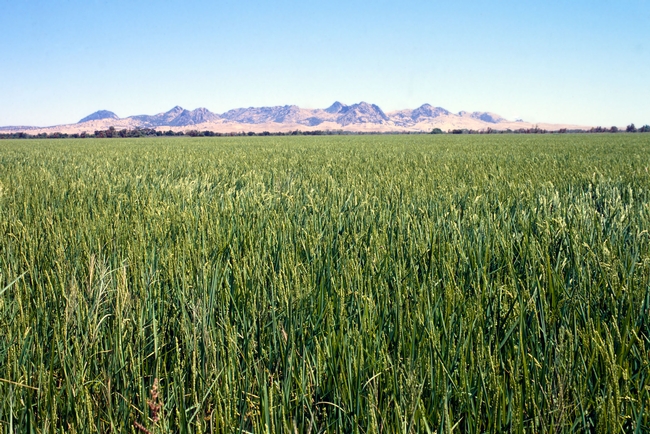Posts Tagged: agricultural research
Report finds 10 to 1 return on investment in international agricultural research
Society gains $10 in benefits, on average, per $1 invested in international agricultural research and development, according to a new report released today (Oct. 14, 2020) by the Supporters of Agricultural Research (SoAR) Foundation.
“This report shows that international agricultural R&D, of the type that drove the Green Revolution, continues to generate a fantastic rate of return and that we have not been investing nearly enough in the types of agricultural R&D undertaken by the CGIAR,” said Julian M. Alston, distinguished professor of agricultural and resources economics at UC Davis and coauthor of “The Payoff to Investing in CGIAR Research.”
Formerly called the Consultative Group on International Agricultural Research, CGIAR is the world's largest global agricultural research network. The report found that CGIAR investments of roughly $60 billion in present value terms have generated a benefit-cost ratio of 10 to 1 over the past five decades.
“The same is true of agricultural R&D undertaken by U.S. land grant universities,” Alston said. “Not only does investing in this kind of R&D make great economic sense, with benefit-cost ratios of 10:1 and more, it saves lives and livelihoods for the poorest of the poor around the world, and reduces pressures on the natural resource base.
“In spite of this evidence, rather than ramping up funding, in the United States and the other high-income countries, we are seeing a decline in real funding support for public agricultural R&D and a decline in donor funding support for R&D undertaken by the CGIAR.”
It can take many years for the investment to pay off, from research and development to farmers applying new practices, planting new crop varieties and adopting new technology. Not investing in research will make it harder for farmers to produce the food needed while meeting the challenges posed by weather, pests, political strife, policy risk and market risk.
“Agricultural R&D is slow magic,” Alston said. “The costly consequences of today's policy mistakes may take some time to become apparent, but then we will have to live with them for a long time.”
Alston's coauthors on the report are Philip G. Pardey, professor of science and technology policy and director of global research strategy at the University of Minnesota, and Xudong Rao, assistant professor of agribusiness and applied economics at North Dakota State University. SoAR commissioned this work to examine the benefit-cost ratio of CGIAR investments.
“This work by esteemed economists exemplifies the continued need for increased investment in agricultural research across the globe,” said Thomas Grumbly, president of SoAR. “Farmers everywhere need new innovations to be able to adapt to the effects of climate change, while still feeding their communities and the world.”
Established in 1971, CGIAR comprises 15 research centers working under One CGIAR mandate to reduce poverty, enhance food and nutrition security, and improve natural resources. CGIAR's early work included developing high-yielding wheat and rice varieties, which is credited with spurring the Green Revolution and saving a billion lives primarily in Asia where many people were on the brink of starvation. Today, CGIAR focuses on ending hunger by 2030 through science to transform food, land and water systems in the climate crisis.
This report provides a strong economic investment case for funding partners as they consider future investments in international agriculture research and development. With a strong presence and long-term partnerships in developing countries, CGIAR is uniquely positioned to further create and develop needed innovations. Additional investments in CGIAR research would continue to yield dramatic returns on investment and benefits for poor communities, particularly in Africa and South Asia where smallholder farmers and local food systems are most vulnerable.
SoAR strongly encourages governments and foundations to accelerate their funding of CGIAR to strengthen smallholder agriculture and protect food systems for future generations.
To read the full report, visit https://supportagresearch.org/assets/pdf/Payoff_to_Investing_in_CGIAR_Research_final_October_2020.pdf. For key findings, visit https://supportagresearch.org/assets/pdf/soar_cgiar_key_findings_final.pdf.


